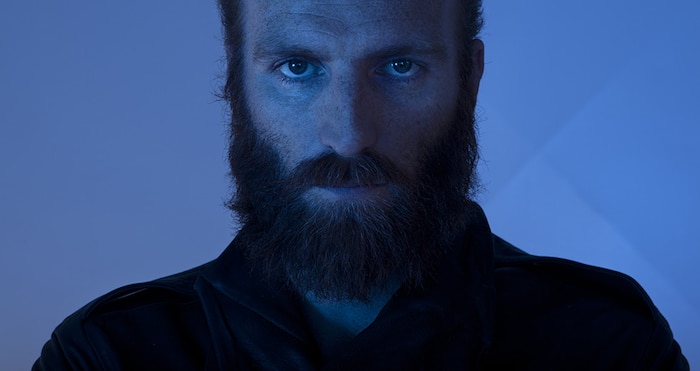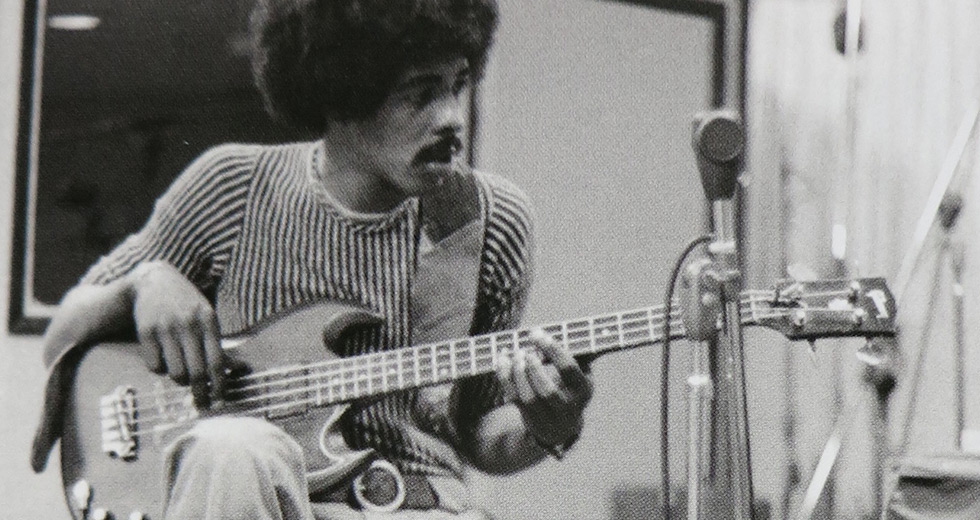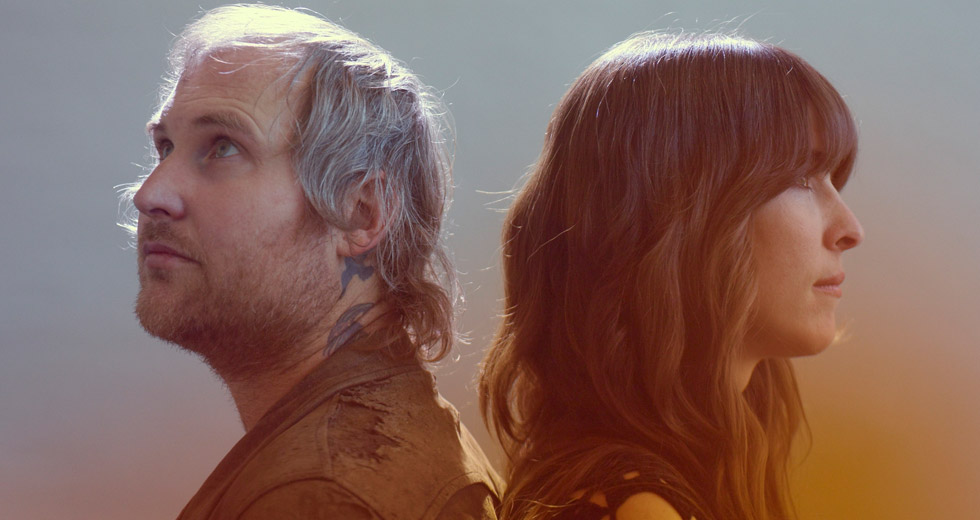Ben Frost on Beauty and Avoiding the Middle Ground
The intense producer details some of the elements that go into his uncompromising music.

Originally hailing from Australia, Ben Frost relocated to Reykjavík in his mid 20s, began working together with close friends Valgeir Sigurðsson and Nico Muhly, and together they formed the Bedroom Community collective and record label. His first album, Steel Wound in 2003 set the palette that he’s been exploring ever since: intensely structured sound art fused with militant post-classical electronics, creating a mix of physical power, immersive melodies, concentrated minimalism and fierce, rupturing metal. His following albums Theory of Machines, and By the Throat both managed to coax guttural sounds from unexpected sound sources, mixed up with dulcimers, howling wolves, life support machines and other paraphernalia.
Whether nominated for a Palme d’Or for his score of Sleeping Beauty, to traveling through war-torn Eastern Congo for a multi-channel video and sound installation that premiered at the Venice Biennale, to creating works such as an opera of Banks’ The Wasp Factory to his album A U R O R A, Frost continues to explore the cross-section of ambient, experimental and noise scapes with a visceral physicality and immersive tenderness. In this edited excerpt from his recent RBMA Radio interview, Frost talks about some of the elements that go into his uncompromising music.
Early memories of sound
I was born in a big city, but I grew up in a small country town in the southeast of Australia. I think some of my earliest memories of a noisy environment stem from my grandfather’s workshop. The sound of welding and the sound of power tools. My first house had an open fireplace and the sound of the fire. There were always bush fires when I was a kid.
I imagine that’s what it must be like to live in the American South where tornadoes are a present threat. That there is this sort of palpable tension in the air during the summer on those hot days where the wind is blowing in from the north and it just feels like you’re stuck inside an oven and you’re just waiting for the sound of the fire engines somewhere in the distance. That was always something that was very present in my childhood, my sonic memory as a child, the sound of emergency, the sound of panic. I’m not sure how that really plays into my music. I’m sure it means something.
That was always something that was very present in my sonic memory as a child, the sound of emergency, the sound of panic.
When I discovered a snake in the backyard, I wasn’t a kid to run away from it, to go and get my parents. I’d be the kid that would try and scoop it into a jar so that I could investigate it more closely. Not because I wasn’t afraid, but because that proximity to a threat is somehow… The way your pupils dilate, the wonderment, the wonder that’s inherent in that sort of threatening situation, there’s something intoxicating about that.
The music that’s always kind of resonated with me ever since my earliest memories of music, the things that have resonated with me have been the ones that have kind of overwhelmed me in a sensory way. You get that rush of tingle down the back of your spine at a certain gesture musically or a voice. Just those fleeting moments of ecstasy, whether it’s some kind of early Metallica record or just really sort of run-of-the-mill classical music like the big symphonies, the ones that we all sort of know and love but kind of don’t care about anymore because they’re so well-known.
On the middle ground
I’m definitely aware of the way in which almost all aspects of current culture from our political systems all the way through to the delivery systems for art and music are leaning towards a sort of comfortable middle ground that placates everybody and satisfies no one. I’ve become increasingly irritated by that as time goes on, where I feel that I’m sort of being coddled by various curatorial practices in art spaces and certainly in the political realm where the difference between left and right is so nonexistent now, it’s hard to tell the difference.
I think that’s also becoming an issue musically, where the way in which we’re presented with music today, this reduction of the spectrum, the reduction of exposure to a wider dynamic, loud, quiet, abrasive, soft, big, small… It’s funneling everything towards a sort of comfortable equilibrium where things can be a little bit extreme and a little bit nice so that everybody kind of likes it. You have to master your records so they sound good on a pair of laptop speakers or coming out of the speakers of an iPad or an iPhone or whatever. It has to fit into a sort of compressed mp3 format that can fit onto a SoundCloud page and your download can’t exceed a certain number of megabytes.
I don’t hear my music as this kind of fear-inducing, belligerent entity that I think a lot of people do.
Everything is being pushed into a system of mediocrity that doesn’t allow for people to have divergent experiences of the same thing. We’re listening to it in the same way, through the same system. The range of experiences are being limited to a middle ground. I have problems with that. I take issue with that. Not in a conscious way. I’m certainly not sitting at a mixing desk adhering to those kinds of issues when I’m working, but I think that my inherent arrangement of objects, the way I work and the way that the arrangement of space that makes me feel comfortable, that makes a piece of music feel finished, is one where the playing field is wider than perhaps a lot of other people would consider them to be.
In that way, and only in that way, do I think my music is in any way sort of “extreme.” I don’t hear my music as this kind of fear-inducing, belligerent entity that I think a lot of people do. For me, it’s a very comfortable space to be in. I’m increasingly aware of the fact that maybe the way I hear this stuff is really not the way most other people hear it. Maybe that’s a problem that I’m never going to resolve. I’m kind of okay with that.
On beauty
To quote my friend Richard Mosse, “Beauty is the sharpest tool in the box.” I think that’s true; it’s never been truer. I know my work is about aiming at some kind of static beauty in all of its forms. Whether it is kind of dwelling in those darker tones in something like By the Throat where it is really dealing in true darkness, and I mean dark in the lighting. It’s lit in a way that is about that sort of flickering candlelight. It’s the glow of smoldering coal.
A U R O R A I think is about beauty in a different way. It’s about light. It’s blinding beauty. Everything about that record has been about expelling the dark shadow to the edge. It’s not about the dark spaces. It’s about that luminescent kind of irradiating glow of the sun, of laser beams, of congealed molecular energy, of something that just has huge energetic potential and that kind of can overwhelm in the most powerful ways.
It gives me a great sense of hope that in spite of everything to the contrary, that there are these tiny aspects that are pointing towards something bigger.
One of the greatest sources of fascination for me the last few years has been seeing all these visualizations of the ATLAS experiments in the Large Hadron Collider. I don’t know who chose that color system, who chose that graphic interface, but I think it’s really interesting. Somebody had to decide on that color palette. I’d love to meet the guy who did and understand the decision behind that. Surely, it could have been done with any … It could have been done in black and white, I’m sure. What was the thinking behind making this thing that just looked like a lighting design from an early ‘90s rave. Just garish neon, fucking onslaught that just burns the retina.
The context of what it’s dealing with is like ripping apart particles of light, just slamming them together in this gigantic fucking thing. We should all be so proud of the fact that we’re even scratching the surface of those kinds of questions. It gives me a great sense of hope, actually, for our species, that in spite of everything to the contrary, that there are these tiny aspects that are pointing towards something bigger. The beauty is in the knowledge. The beauty is in the understanding. It’s in the trying; the trying is the beautiful thing. It’s the fucking walking up the mountain for no other reason than because you want to get to the top.

